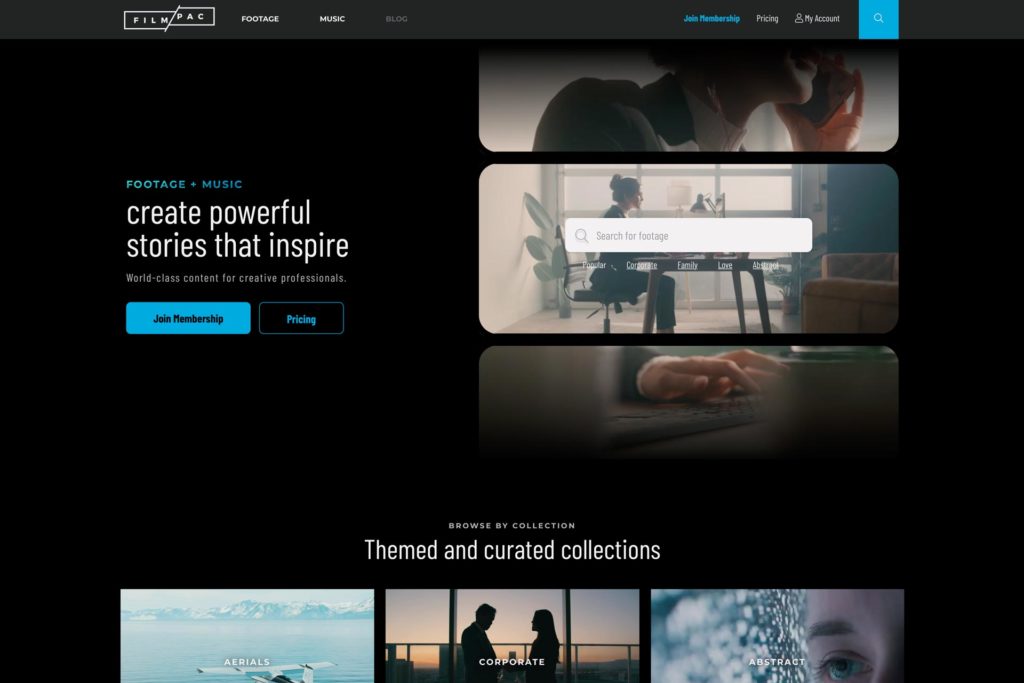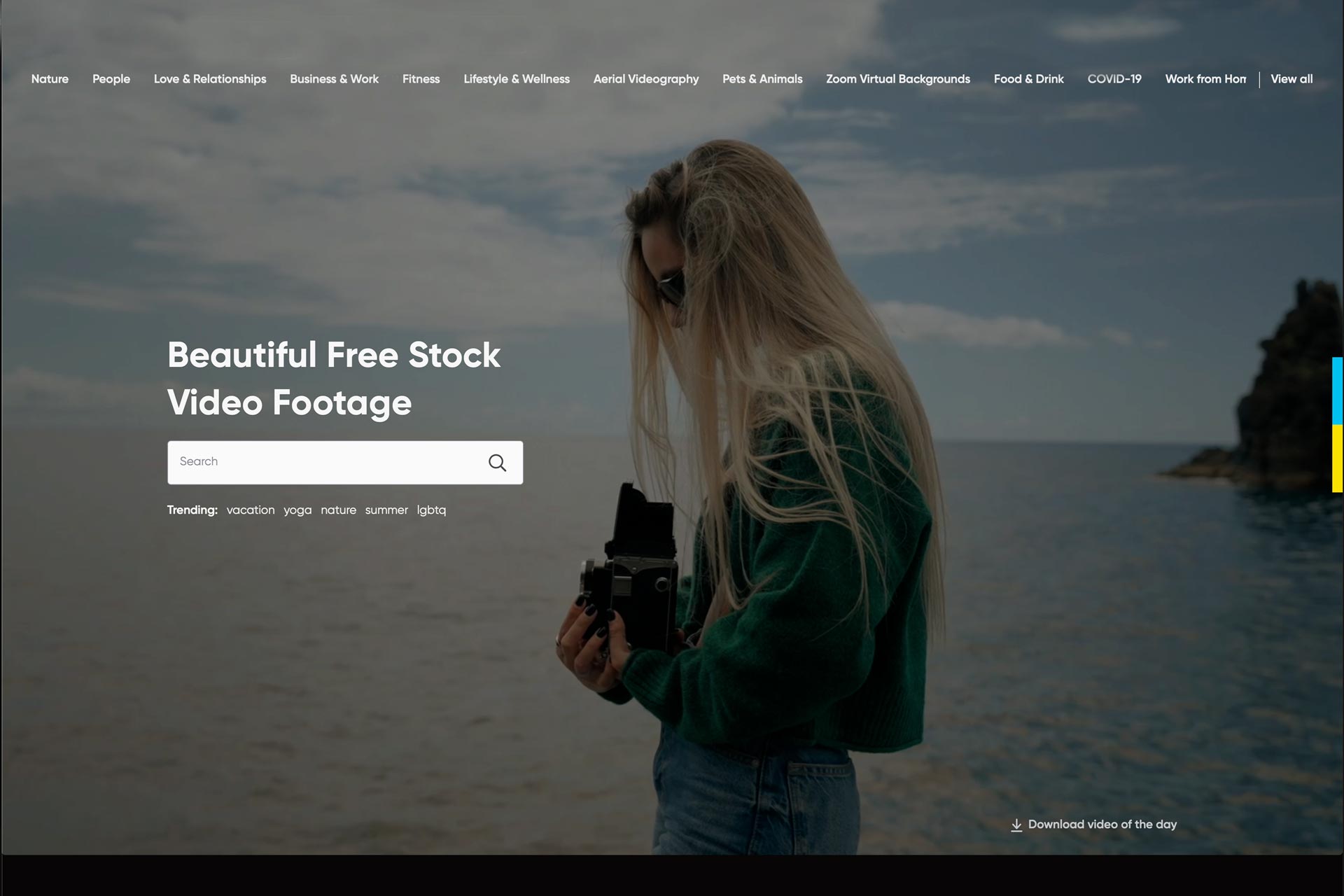As the fiscal year wraps up, you need a compelling video to share your organization impact success stories. But with budgets tighter than ever, how can you make it happen? This is where using stock footage sites comes in handy.
In our article, How to Create Videos On A Budget, we mentioned using stock footage is a cost-effective way to add high-quality visuals to your video without the large expense of filming days. Nowadays, dozens of quality stock sites offer music, footage, photos, graphics, and more.
Table of Contents
- Benefits & Disadvantages of Using Stock Footage
- Cons (or the trade-offs )
- The Best Stock Footage Sites for Storytelling
- Budget Breakdown Using Stock Footage
- Real-World Examples
- Let's Wrap Up Talking About Stock Footage Sites
- For more cost-saving tips, check out our article on creating videos with limited budgets .
Benefits & Disadvantages of Using Stock Footage
For nonprofits, using stock footage can significantly reduce production costs, directing more funds toward crucial projects. Additionally, it speeds up production timelines, helping you meet tight deadlines without compromising storytelling quality.
Pros
- Save money: You can reduce production (filming) costs. Stock footage libraries offer a wide range of affordable options. These options allow you to access high-quality footage when your budget constrains you from filming additional scenes or b roll.
- Speeds up the process: Incorporating stock footage can expedite the video production timeline. When you have specific shots in mind, finding the proper stock footage can provide immediate visual content.
- Save time: You can skip the hassle of organizing and shooting specific scenes. Instead, you can quickly find ready-to-use footage that matches your needs. This saves time during the production process.
Cons (or the trade-offs)
- Limitation to footage: While stock libraries offer a vast selection, diversity limitations exist. There's often a lack of ethnic (there are tons of white people on Stock sites) and situational diversity.
- Not tailored to your brand: Stock footage caters to many projects. It will not always capture the unique essence of your brand. If you find some clips that align with your visual style, the chances of finding more are slim due to stock footage's limitations.
- Continuity Issues: Using stock footage from various creators can cause continuity issues in your video. This can make maintaining visual consistency challenging and result in a less seamless story edit. While careful editing and storytelling techniques can help, the problem may persist.
The Best Stock Footage Sites for Storytelling

For instance, at BairStories, we often use FilmPac and FilmSupply to source high-quality clips for our projects. StockFootage helps offset our storytelling services when needed.
These platforms offer scenes and one-off clips perfect for creating engaging environmental stories, from showcasing local recycling efforts to highlighting conservation success stories.
These scenes are a collection of clips with various angles featuring the same actor doing something in one location. This type of footage is helpful when building a sequence of 2-3 clips together to tell a visual story from beginning, middle, and ending.
Our go-to is FilmPac, which is more affordable and offers simpler licensing than Film Supply. However, FilmSupply has the most stunning clips on the internet.
Best Premium Sites for Scenes
Best Budget Friendly for One-Off Clips (Some scenes)
Free and extremely limited
Budget Breakdown Using Stock Footage
The mock budgets below focus on partial production costs. These numbers don't reflect the cost of equipment, pre-production, post-production, or profit for video businesses.
Nonetheless, you can still see the cost savings of $6,650 between the two budget examples.
| Filming Days | Crew Size | Toal Crew Rate | Stock Costs | Total | |
| Non-Stock Footage Budget Mini Documentary | 2.5 days (1 interview, b-roll, and scenes) | 3 | $3,600 per day | $0 | $9,000 |
| Stock Footage Budget Mini Documentary | 1/2 day (interview only) | 3 | $3,600 per day | $550 | $2,350 |
| Difference | $6,650 |
Real-World Examples
Environmental Initiative Awards
We typically craft 5-7 stories annually for the Environmental Initiative Awards producing these stories between March and the start of May.
That's roughly 1.5 months to develop, film, and edit 5-7 stories. 🤯To put this in perspective, one of our typical brand films takes 60-90 days, including pre-interviews, filming the interview, filming scenes and B-roll footage, and editing and polishing the story.
Part of the reason we're able to meet the deadline and deliver quality stories is our use of stock footage for B-roll and scene development. Each of the 5-7 award recipients lives across Minnesota.
The travel and filming costs of capturing the necessary scenes and B-roll would blow up the budget. Stock footage allows us to work within our client's budget and schedule to deliver quality stories.
Did you notice more face time when the person was talking on camera in the Apartment Recycling Story than in Jamez's story? As mentioned above, this wasn't a creative choice but a limitation. While there are various recycling stock clips, they don't all work together. The clips look good but don't feel cohesive when you string them together.
BairStories
For our own evergreen stories, we used stock footage. We filmed all the script readouts at one location and then sourced clips to enhance our stories visually. Due to our story type, the mismatch of stock footage worked in our favor as a montage.
Let's Wrap Up Talking About Stock Footage Sites
In conclusion, you can confidently explore stock sites and make informed decisions that align with your company goals and budget. By strategically incorporating stock footage, your environmental organization can tell powerful stories without breaking the bank.
This approach saves time and money and ensures your message reaches and resonates with your audience effectively. Remember, the key is to find the right balance between stock footage and original content to maintain a cohesive and impactful narrative.
